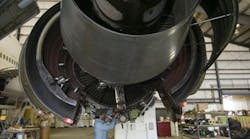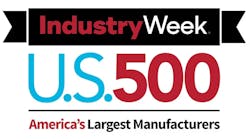Remote Monitoring & Diagnostics: Is the Risk Worth the Gain?
For too long, the process of collecting, analyzing and making decisions from equipment data has been a rather painful and time-consuming process for most OEMs. But recent advances in software have simplified remote monitoring & diagnostics (RM&D) and even resulted in cost savings for OEMs. Many OEMs feel installing a pre-built “appliance” RM&D system is too risky for their infrastructure. However, “appliance” solutions can offer a more seamless integration than many “homegrown” applications.
Why are OEMs pursuing RM&D?
They’re looking for new ways to improve the performance of their installed assets. To improve performance of assets, you first have to know what they’re doing. An RM&D solution provides visibility into equipment performance—even in remote areas. With RM&D, OEMs can better understand machine performance, failure modes, and actual usage patterns. Armed with this valuable information, the OEM can improve asset availability and optimize equipment via better maintenance insight. OEMS can also use RM&D data to right-size designs for their next generation of products.
They want to improve their end customers’ experience. RM&D solutions can provide OEMs with a competitive advantage by helping build deeper connections with customers. These solutions allow OEMs to predict problems and then schedule preventative maintenance for both fleets and individual machines. What better way to serve customers than to be there before they even know they need you? But RM&D goes beyond customer service. Deploying these solutions reduces compliance and warranty risk. Through analyzing machine data, OEMs can determine when equipment is being maintained correctly and proactively offer maintenance services to reduce warranty claims.
They’re seeking to create new revenue-generating service models. RM&D solutions can be used to monetize new fleet data monitoring services. OEMs can develop new revenue streams by selling preventative maintenance contracts and capturing more parts and repair sales. They can even expand to cover competitive installed bases and auxiliary equipment.
They’d like to reduce their overall cost-to-serve. Every OEM has to do more with less. With RM&D solutions, they can leverage just a few experts to monitor and troubleshoot an entire customer asset fleet. And they can reduce windshield time by improving service capacity utilization and knowing which parts and expertise they’ll need before they arrive at the customer’s facility.
What issues are OEMs facing when deploying homegrown RM&D solutions?
- Virtually centralizing unlike applications, devices and sensors via a web-based remote monitoring & diagnostic solution is hard, often harder than anticipated.
- Developing an elegant user interface that is customizable for end-user accounts and optimized for both browser and mobile environments is really, really tough.
- Some OEMs that initially shied away from cloud-based hosted data now realize the efficiency and scalability it provides, and are now kicking themselves a little. End-users don’t always understand where the scope of a software solution begins and ends.
- Few seem to have clarity on what a three-tiered data privacy model between an automation vendor, OEM and end user should look like.
- Collecting and historizing large amounts of data, making sense of that data and reporting it in actionable ways requires expertise and time. Acquiring and keeping that expertise in-house is also extremely costly.
- Developing and maintaining a homegrown RM&D software solution that delivers on customers’ expectations also requires expertise, time and money.
How do RM&D appliances solve these issues?
An “appliance” is a pre-engineered and pre-built solution for a specific problem that dramatically reduces the engineering costs (NPI, requisition, commissioning) and risks for customers. OEMs trying to deliver RM&D solutions on their own are likely taking on too much risk, and as a result, cause themselves more stress, time and money than those who seek assistance from specialists.
Today’s RM&D appliance solutions are controller agnostic and can be installed on a variety of equipment. OEMs would be well served to let the monitoring experts handle installation and the other technical aspects. They can have an appliance up and running in just a few days.
These RM&D solutions are scalable and customizable. Once OEM customers experience the benefits, the OEM can quickly and easily expand monitoring to other equipment, additional plants, and even competitors’ machines.
Another issue is cybersecurity, which is an increasing threat to infrastructure. OEMs can leave the initial risk, as well as the need to keep up with the latest security threats and defenses, to the software experts. OEMs can also let the technology experts capture and crunch the data and instead focus on what the data means for them and their customers.
It’s all about focus. OEMs are, by nature, engineering organizations, not software and IT domain experts. Yet these companies frequently acquire and retain an HMI engineer, a software engineer (or two or three) and an IT team to figure out how to make software applications work on top of their machines, when instead they could go the “appliance” route and save time and needless headaches.
Ultimately the benefits of an “appliance” solution outweigh the benefits of a “homegrown” solution.
For OEMs, the benefits of a pre-built, pre-configured “appliance” solution are clear — scalability, less cost, less manpower and reduced risk. These advantages outweigh any perceived benefits of a custom-built solution. By choosing an appliance RM&D solution, OEMs can focus on what they do best — building and servicing equipment to meet customer needs and developing customer relationships, not trying to create data monitoring solutions.
By deploying an RM&D appliance, PEECO, a mission critical power systems provider, has been able to save its customers money by maximizing uptime and decreasing energy consumption, while at the same time making PEECO more profitable. Their vice president told us, “At the end of the day, their success is our success.” With RM&D appliances, OEMs can achieve this elusive “win-win” by keeping their focus where it should be — on the customer.




